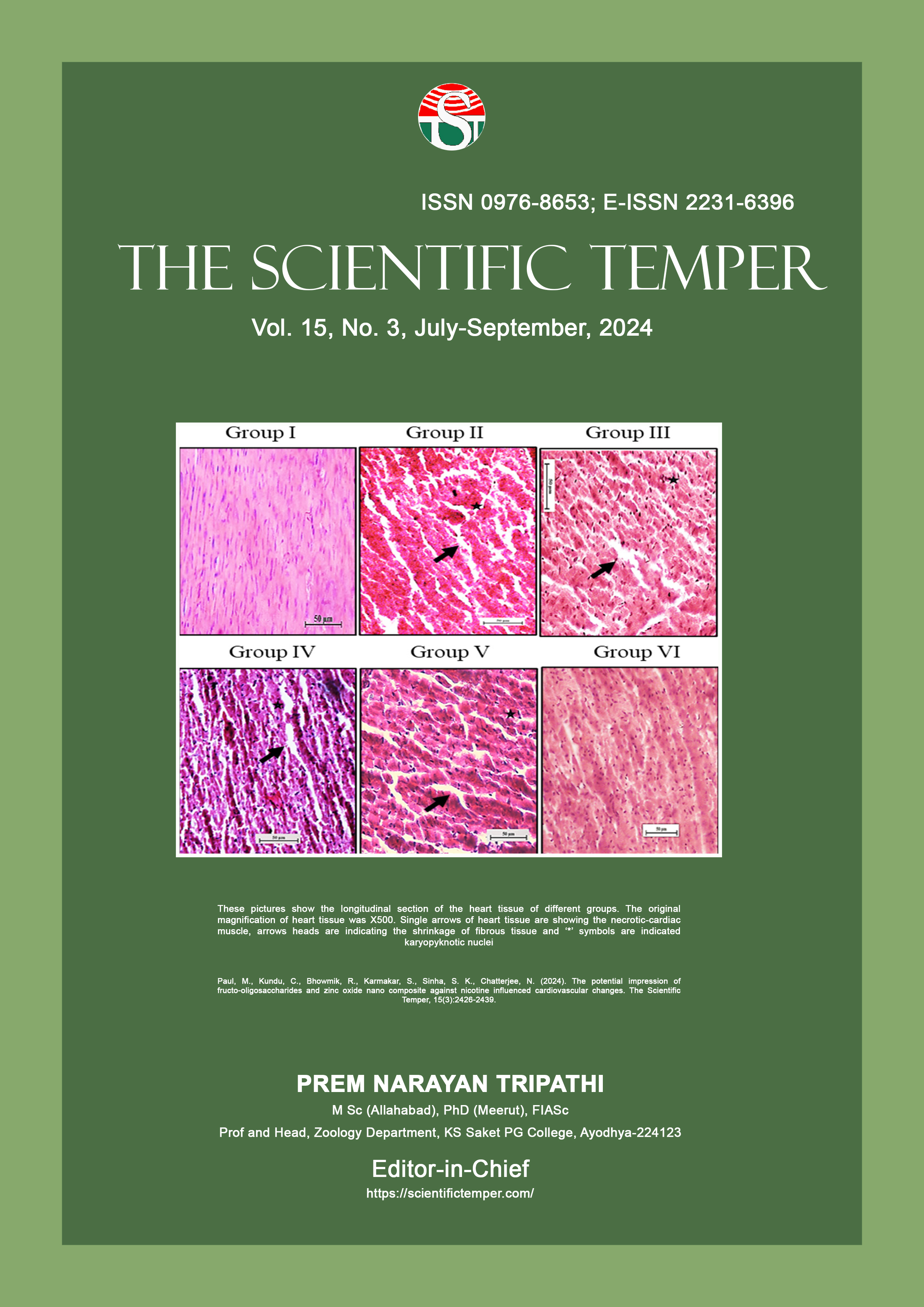Brower blowfish nash secured stochastic neural network based disease diagnosis for medical WBAN in cloud environment
Downloads
Published
DOI:
https://doi.org/10.58414/SCIENTIFICTEMPER.2024.15.3.62Keywords:
Wireless Body Area Networks, Cloud, Brouwer Fixed Point, Blowfish Nash Equilibrium, Stochastic Neural NetworkDimensions Badge
Issue
Section
License
Copyright (c) 2024 The Scientific Temper

This work is licensed under a Creative Commons Attribution-NonCommercial-ShareAlike 4.0 International License.
The trending technology in Wireless Sensor Networks (WSN) is to improve the healthcare system by using Wireless Body Area Networks (WBANs). Implantable Sensor and wearable sensors are inexpensive technology, which are designed to track the body signals and to get intermediate physical activity status. This is considered as an unremarkable choice for continuous health monitoring. In recent years, various routing protocols had been designed to provide reliable data transmission in WBAN. However, many of these protocols are not focused more on security aspects such as data confidentiality and data integrity in medical data transmission. And also, the energy efficient communication methods have significantly vulnerable to various attacks due to the lack of computationally efficient authentication and authorization process. To rectify the drawbacks of existing system a new approach Brower Blowfish Nash-secured Stochastic Neural Network-based (Brower BNSNN) is proposed for medical data transmission through WBAN in cloud environment. The Brower BNSNN method is designed to perform data collection, compression, encryption/decryption and anomaly detection for medical WBAN disease diagnosis in cloud environment. First, distinct numbers of sensor nodes that are attached in the bodies of multiple patients collected for further validation and anomaly detection. Secondly Fixed Point-based compression is performed in the cloud by the cloud user. The sensor nodes compress their sensed data into WBAN messages and sent to cloud server for further processing and from this data confidentiality and data integrity are ensured. Third step is Blowfish Nash Equilibrium-based encryption and decryption is applied to the compressed data to ensure security during the communication between devices or cloud server. Finally, Stochastic Neural Network-based anomaly detection model is designed to perform anomaly detection via authorization process. The designed network performs two-stage authorization such as validating sub-keys and checking kernel process attacks and network logs attacks. Simulations are performed to measure and validate the performance metrics in terms of data confidentiality, data integrity, disease diagnosis accuracy, authentication, in Health Monitoring System.Abstract
How to Cite
Downloads
Similar Articles
- R. Sakthiraman, L. Arockiam, RFSVMDD: Ensemble of multi-dimension random forest and custom-made support vector machine for detecting RPL DDoS attacks in an IoT-based WSN environment , The Scientific Temper: Vol. 16 No. 03 (2025): The Scientific Temper
- Anita M, Shakila S, Stochastic kernelized discriminant extreme learning machine classifier for big data predictive analytics , The Scientific Temper: Vol. 15 No. spl-1 (2024): The Scientific Temper
- Elangovan G. Reddy, Anjana Devi V, Subedha V, Tirapathi Reddy B, Viswanathan R, A smart irrigation monitoring service using wireless sensor networks , The Scientific Temper: Vol. 14 No. 04 (2023): The Scientific Temper
- S. Hemalatha, N. Vanjulavalli, K. Sujith, R. Surendiran, Effective gorilla troops optimization-based hierarchical clustering with HOP field neural network for intrusion detection , The Scientific Temper: Vol. 15 No. spl-1 (2024): The Scientific Temper
- Deena Merit C K , Haridass M, Analysis of multiple sleeps and N-policy on a M/G/1/K user request queue in 5g networks base station , The Scientific Temper: Vol. 14 No. 02 (2023): The Scientific Temper
- Geeta S Desai, Santosh Hajare, Sangeeta Kharde, Prevalence of non-alcoholic steatohepatitis in a general population of North Karnataka , The Scientific Temper: Vol. 14 No. 04 (2023): The Scientific Temper
- R. Kalaiselvi, P. Meenakshi Sundaram, Machine learning-based ERA model for detecting Sybil attacks on mobile ad hoc networks , The Scientific Temper: Vol. 15 No. 04 (2024): The Scientific Temper
- Anurag Tripathi, Histoenzymological Distribution of Acetylcholinesterase in the Rostral Mesencephalic Torus Semicircularis and Tegmental Nuclei of an Indian air Breathing Teleost Heteropneustes fossilis , The Scientific Temper: Vol. 12 No. 1&2 (2021): The Scientific Temper
- Senthil Murugan C, Vijayabalan Dhanabal, Sukumaran D, Suresh G, Senthilkumar P, Analysis of distributions using stochastic models with fuzzy random variables , The Scientific Temper: Vol. 15 No. 04 (2024): The Scientific Temper
- P. S. Dheepika, V. Umadevi, An optimized approach for detection and mitigation of DDoS attack cloud using an ensembled deep learning approach , The Scientific Temper: Vol. 15 No. 03 (2024): The Scientific Temper
<< < 1 2 3 4 5 6 7 8 9 10 > >>
You may also start an advanced similarity search for this article.
Most read articles by the same author(s)
- M. Iniyan, A. Banumathi, The WBANs: Steps towards a comprehensive analysis of wireless body area networks , The Scientific Temper: Vol. 15 No. 03 (2024): The Scientific Temper



